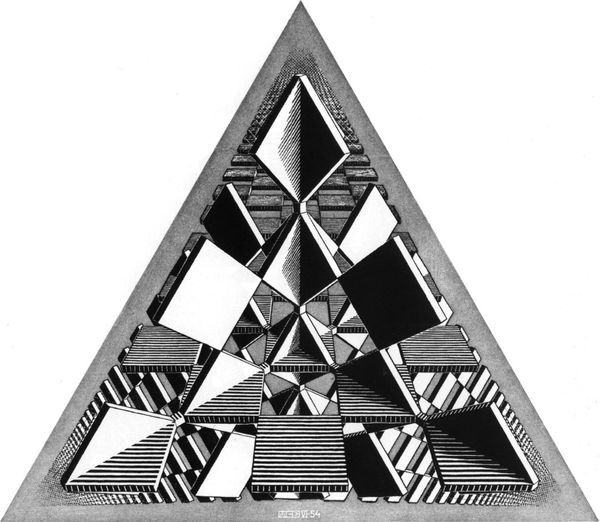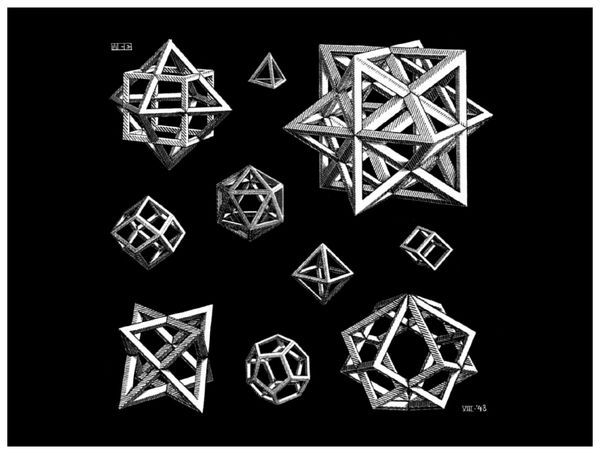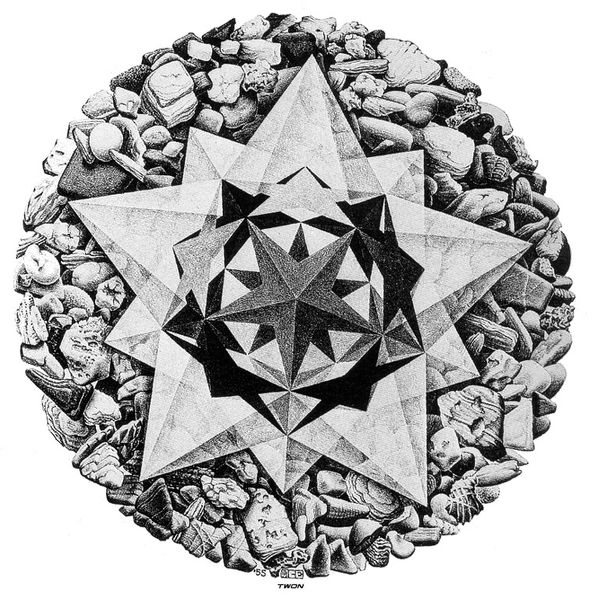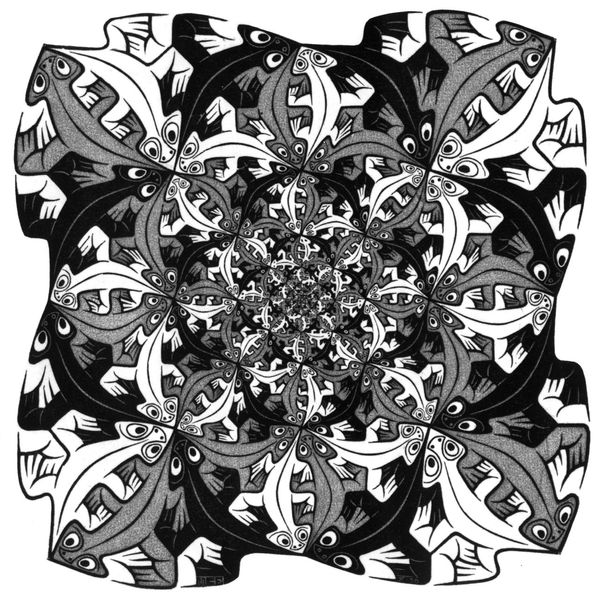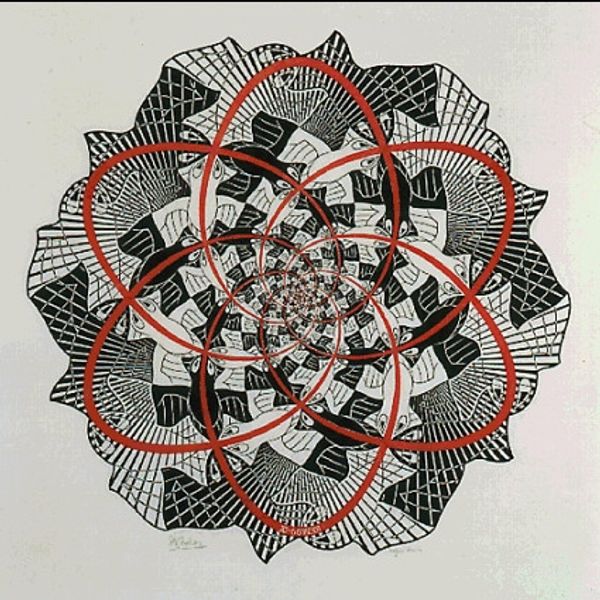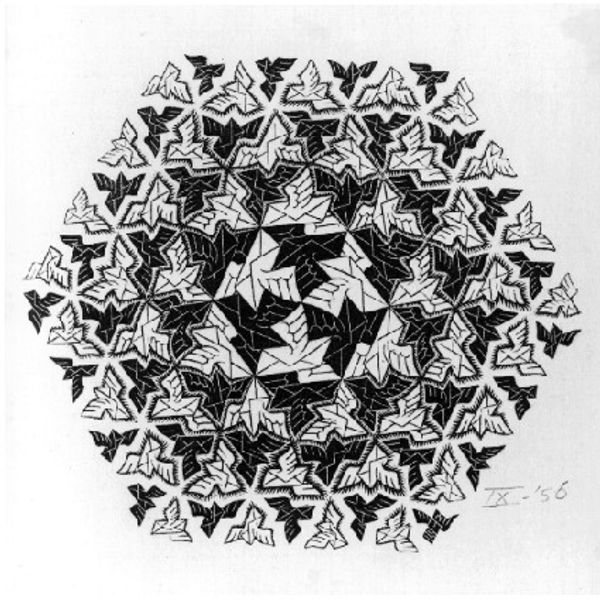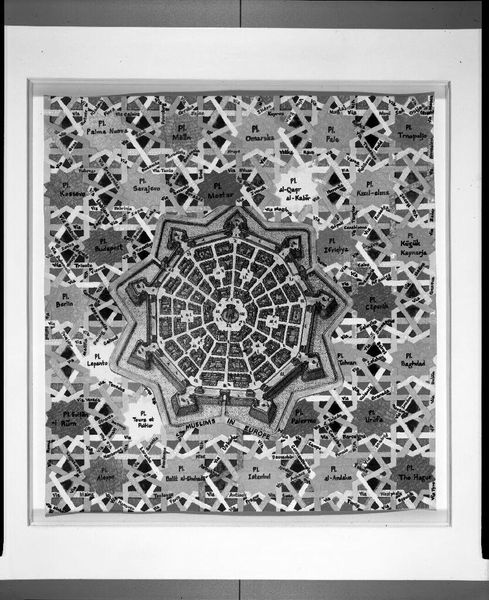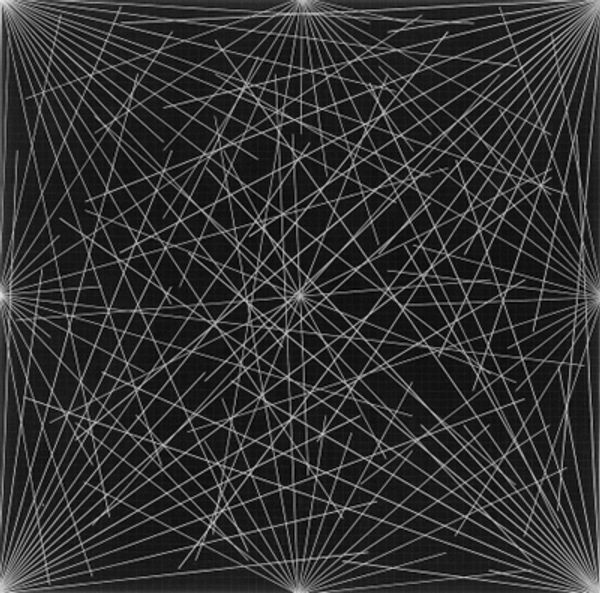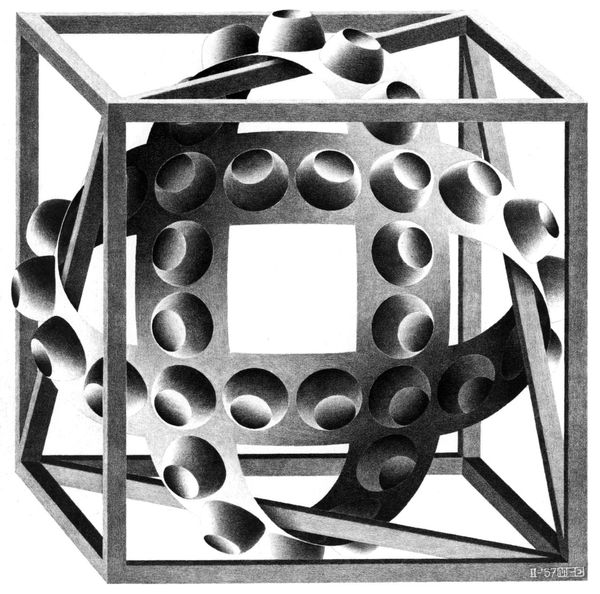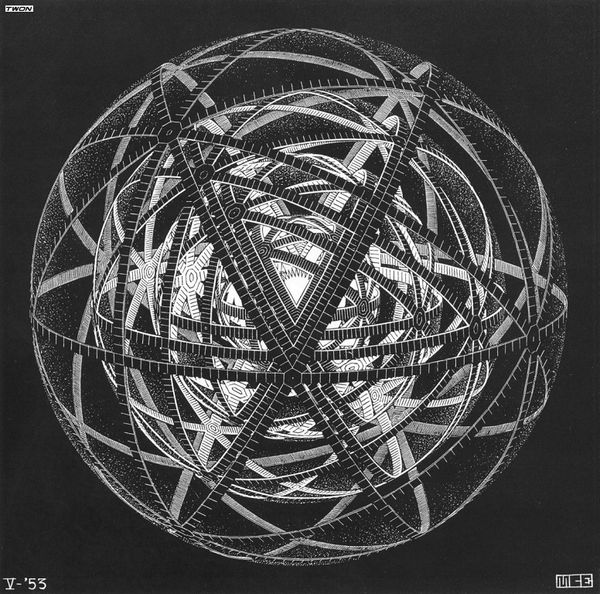
graphic-art, print
#
graphic-art
# print
#
pattern
#
geometric
#
geometric-abstraction
#
intricate pattern
#
surrealism
Copyright: M.C. Escher,Fair Use
Editor: Here we have M.C. Escher's "Stars" from 1948, a print rendered in graphic art style. I’m struck by its impossible geometry and the two chameleons nestled within. It's…baffling! What can you tell me about this work? Curator: Escher's "Stars" is indeed a captivating enigma. Beyond its immediate visual impact, consider the recurring motif of stellated polyhedra. These aren't just geometric shapes; they're ancient symbols often associated with the cosmos, spirituality, and even Platonic philosophy. Notice how Escher positions the chameleons within the framework. Editor: The chameleons feel deliberately placed. Curator: Precisely! Chameleons, culturally, represent adaptation, change, and sometimes even deception. Escher, fascinated by tessellations and transformations, seems to be using them as a symbolic stand-in for the human mind’s ability to perceive and adapt to shifting realities. The whole work could be a visual metaphor for cognitive flexibility in a complex universe. Does that reading resonate? Editor: It does, actually. So, the geometric figures are about universal truths, and the chameleons are how we grapple with them? Curator: A possibility, yes. Or, consider this: are the stars a cage? Are they a home? Are the chameleons trapped, or are they perfectly content within their geometrical constellation? Escher prompts us to ponder these dualities. Editor: That’s really thought-provoking. I initially just saw a cool optical illusion, but there's so much more layered beneath the surface! Curator: Exactly. The enduring power of images lies in their ability to be reinterpreted across time and cultures.
Comments
No comments
Be the first to comment and join the conversation on the ultimate creative platform.

